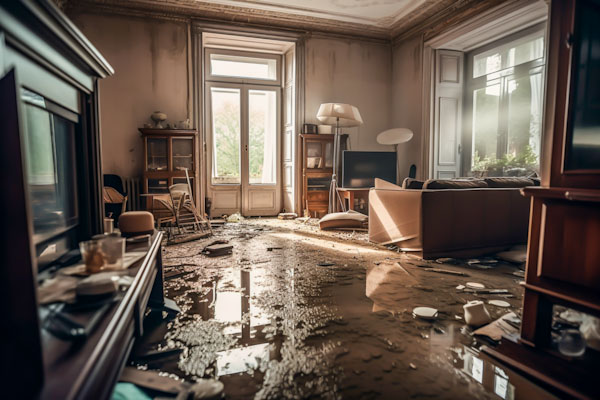Water damage can be a devastating experience for any homeowner. Whether it’s caused by natural disasters like flooding or plumbing issues like burst pipes, the effects can be far-reaching and overwhelming. That’s why it’s essential to have a comprehensive water damage & restoration checklist to guide you through the process of recovery and restoration. In this article, we will discuss the key steps involved in water damage inspection and restoration. Let’s dive in!
Understanding Water Damage
Before we embark on the whole water damage assessment, inspection and restoration journey, it’s crucial to have a good understanding of what water damage entails. Simply put, water damage refers to the destruction or loss caused by water intrusions in your home. It can occur in various forms, and each type requires a specific approach for the restoration work.
Water damage can be a homeowner’s worst nightmare. The sight of water pooling on the floor or dripping from the ceiling can cause panic and stress. But understanding the different types of water damage and their effects can help you navigate through this challenging situation with confidence.
Types of Water Damage
There are three categories of water damage, each with its own characteristics labour costs and restoration requirements:
Clean Water Damage:
This type of water damage originates from a clean water source, such as a broken water supply pipe or faucet. It poses no immediate health risks to occupants. However, even clean water can cause significant damage if left unattended. The longer it sits, the more likely it is to become contaminated and turn into a more serious type of water damage.
Grey/Gray Water Damage:
Water that has already been used for household, commercial, and industrial purposes is referred to as grey water, often spelt as gray water. This includes any residual, untreated water produced by sinks, baths, and washing machines.
It may pose a health risk if ingested or exposed to for an extended period. Grey water can contain bacteria, viruses, and other microorganisms that can cause illness. It is essential to handle this type of grey water or damage with caution and seek professional assistance for proper clean-up and disinfection.
Black Water Damage:
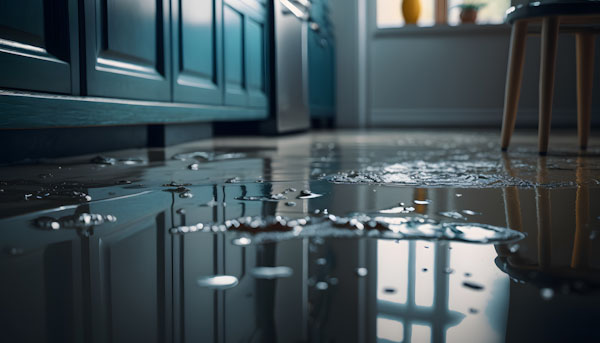
Black water damage is the most severe type and typically results from sewage backups or flooding from natural disasters. It contains hazardous pathogens and other contaminants, posing significant health risks. Black water can contain bacteria, viruses, fungi, and chemicals that can cause severe illness or even death. It is crucial to evacuate the affected area immediately and seek professional help for safe and thorough cleanup.
Effects of Water Damage on Your Property
Water damage can have serious consequences on your property if not addressed promptly and properly. Some common effects include:
Structural Damage:
Excessive water can weaken the foundation, walls, and other structural components of your home, compromising its stability. Over time, this can lead to structural failure and costly repairs. It is essential to address water damage promptly to prevent further deterioration of your property’s structure.
Mould and Mildew Growth:
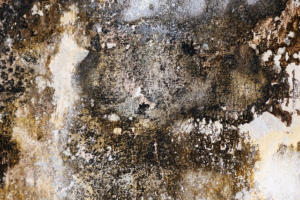
Moisture build-up provides an ideal environment for mould and mildew to thrive, leading to potential health issues for occupants. Mould can spread rapidly and release spores into the air, causing respiratory problems, allergies, and other health complications. Proper drying and dehumidification are crucial to prevent mould growth and ensure a healthy living environment.
Electrical Hazards:
Water can damage electrical systems, increasing the risk of electrocution and electrical fires. When water comes into contact with electrical outlets, wires, or appliances, it can cause short circuits and power surges. It is vital to turn off the electricity in the affected area and have a qualified electrician inspect the electrical system before restoring power.
Damage to Belongings:
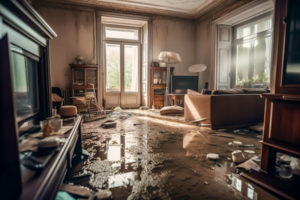
Furniture, appliances, and personal belongings can be ruined by prolonged exposure to water. Upholstered furniture, carpets, electronics, and sentimental items may suffer irreparable damage if not promptly dried and restored. Salvaging and restoring your belongings should be a priority in the water damage restoration process.
Initial Steps for Water Damage Restoration
When faced with water damage, it’s essential to take immediate action to mitigate further damage and begin the restoration process. Here are some crucial steps to follow:
Water damage can be a devastating experience for any homeowner. Whether it’s caused by a burst pipe, a leaky roof, or a natural disaster, the effects can be far-reaching. Not only can water damage destroy your belongings and compromise the structural integrity of your home, but it can also lead to mold growth and other health hazards. That’s why it’s crucial to act quickly and efficiently to minimize the damage and restore your home to its pre-loss condition.
Safety Measures to Consider
Prioritize your safety and that of your family members when dealing with water damage. Here are some important safety measures to consider:
Shut off the Power:
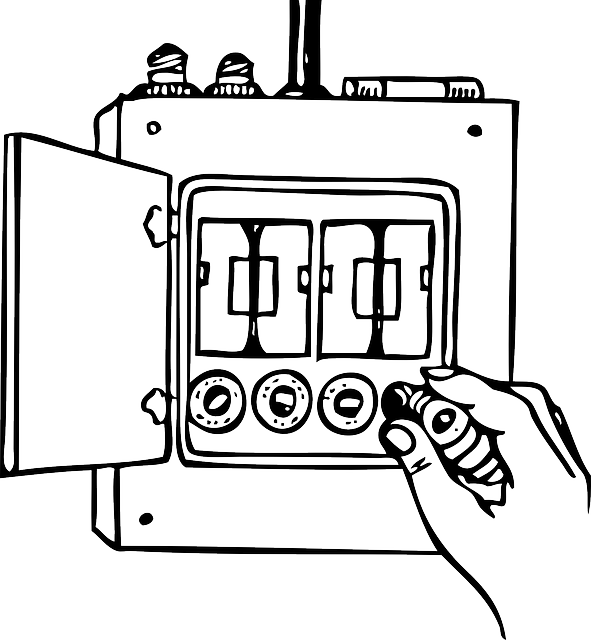
Switch off the electrical power supply to prevent potential electrical hazards. If you’re unable to do so safely, contact a professional electrician. Water and electricity are a dangerous combination, and it’s crucial to eliminate the risk of electrocution.
Wear Protective Gear
When entering the affected area, ensure you have protective gear like gloves, boots, and a mask to minimize the risk of exposure to contaminants. Water damage can introduce harmful bacteria, sewage, and other hazardous substances into your home, so it’s essential to protect yourself.
Be Aware of Structural Integrity: Assess the structural integrity of your home before entering any part that may be compromised. If you have any doubts, seek professional assistance. Water damage can weaken the structural components of your home, such as walls, floors, and ceilings. It’s crucial to ensure that it’s safe to enter and navigate the affected areas.
Once you’ve taken the necessary safety precautions, you can begin the process of water damage restoration. However, it’s important to note that water damage restoration is a complex real time, and specialized task that often requires professional expertise. While you can take some initial steps to mitigate the damage, it’s advisable to seek the assistance field services of a reputable water damage and restoration contractor or company to ensure thorough and effective restoration.
Documenting the Damage for Insurance
It’s crucial to document the extent of the water damage for your insurance claims purposes. Take photos or videos of the affected areas and belongings to support your insurance company and claims. Keep copies of all relevant documents, such as repair cost estimates and receipts. Insurance companies typically require detailed evidence of the damage to process your claim efficiently. By documenting the damage thoroughly, you can ensure that you receive the compensation you deserve.
Water damage restoration can be a lengthy and complex process. It involves not only removing the water and drying the affected areas but also addressing any underlying issues, such as mould growth and structural damage.
A professional water damage restoration company will have the necessary equipment, expertise, and experience to handle all aspects of the restoration process. They will use specialized techniques and the tools needed to extract the water, dry the affected areas, and restore your home to its pre-loss condition.
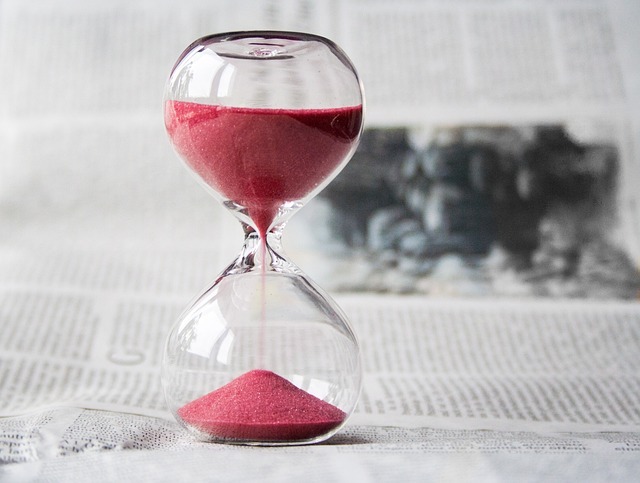
Remember, time is of the essence when it comes to water damage restoration projects. The longer the water sits, the greater the damage and the higher the risk of mold growth. So, don’t delay in taking action. Contact a reputable water damage restoration contractor or company as soon as possible to minimize the damage and ensure a swift and thorough restoration process.
Professional Assessment of Water Damage
After ensuring your safety and documenting the water damage assessment, it’s advisable to seek professional assistance for a comprehensive assessment of the water damage. Check online reviews about the reputation and capabilities of any professional team. For instance how good are their:
- Customer relationship management
- Qualifications
Project Management Capabilities
A professional team will have been down the water damage and restoration route many times before, but even so having great project management and problem solving skills can help keep things on track when the unexpected happens.
Water Damage Inspection
A professional inspection team helps home owners and property managers identify hidden areas of damage, assess structural integrity, and determine the appropriate restoration approach. Experienced restoration contractors have the expertise and equipment to accurately evaluate the extent of the damage.
What to Expect During the Assessment
During the assessment, the restoration industry professionals will:
- Inspect the affected areas to determine the source of water and the type of damage.
- Identify any potential hazards and safety risks.
- Provide a detailed evaluation report, including recommendations for restoration.
- Advise on how to properly dispose of damaged materials.
Water Removal and Drying Process
Once the assessment is complete, the next step is to remove the standing water and initiate the drying process.
Job Management Software/ Restoration Management Software
Some restoration professionals will use mobile device cloud based job management software (sometimes also referred to as restoration management software) to schedule jobs, provide progress tracking and increase efficiency. Checklists help train new new hires and ensure consistency and completeness. Moreover the ability to upload photos instantly and create professional looking in real time reports improves customer job satisfaction.
Equipment Used in Water Removal
Professional restoration services companies use specialized equipment and tools to efficiently remove water from your home:
Water Extractors: These powerful machines remove standing water from property quickly and effectively.
Dehumidifiers: Dehumidifiers help reduce the moisture levels in the air, aiding in the drying process.
Techniques for Drying and Dehumidification
Effective drying and dehumidification techniques are essential for restoration industry preventing further damage. The top water restoration business professionals will:
Place industrial fans strategically to promote air circulation.
Use dehumidifiers to remove excess moisture from the air.
Monitor moisture levels regularly to keep moisture readings ensure proper drying.
Cleaning and Sanitizing the Affected Area
Once the water has been removed and the area is dry, thorough cleaning and sanitization are necessary to ensure a safe living environment.
Dealing with Mould and Mildew

Mould and mildew can quickly grow in moist environments, so it’s crucial to address any signs of their presence. Professionals will:
Inspect the property for mould and mildew growth and implement appropriate remediation water mitigation strategies.
Remove and dispose of any contaminated materials safely.
Apply antimicrobial treatments to inhibit the growth of mould and mildew.
Sanitizing and Odour Removal Techniques
Restoration professionals will also sanitize the affected area to eliminate bacteria and odors. This may involve:
Using commercial-grade disinfectants to kill bacteria and germs.
Employing odour-eliminating techniques or tools like ozone generators or air purifiers.
To Sum Up
By following this comprehensive water damage inspection & restoration checklist, you can navigate and manage the challenging process of water damage assessment, mitigation, recovery and restoration with confidence.
Remember, as a property owner it’s crucial to seek professional assistance to ensure the best possible outcome for water damage jobs. Don’t let water damage dampen your spirits – take action and restore your home to its former glory!
Finally many restoration projects are taking advantage of cloud based software to help save time, and provide real time visibility and reports.
See more Helpful Content
Visit our Homepage

